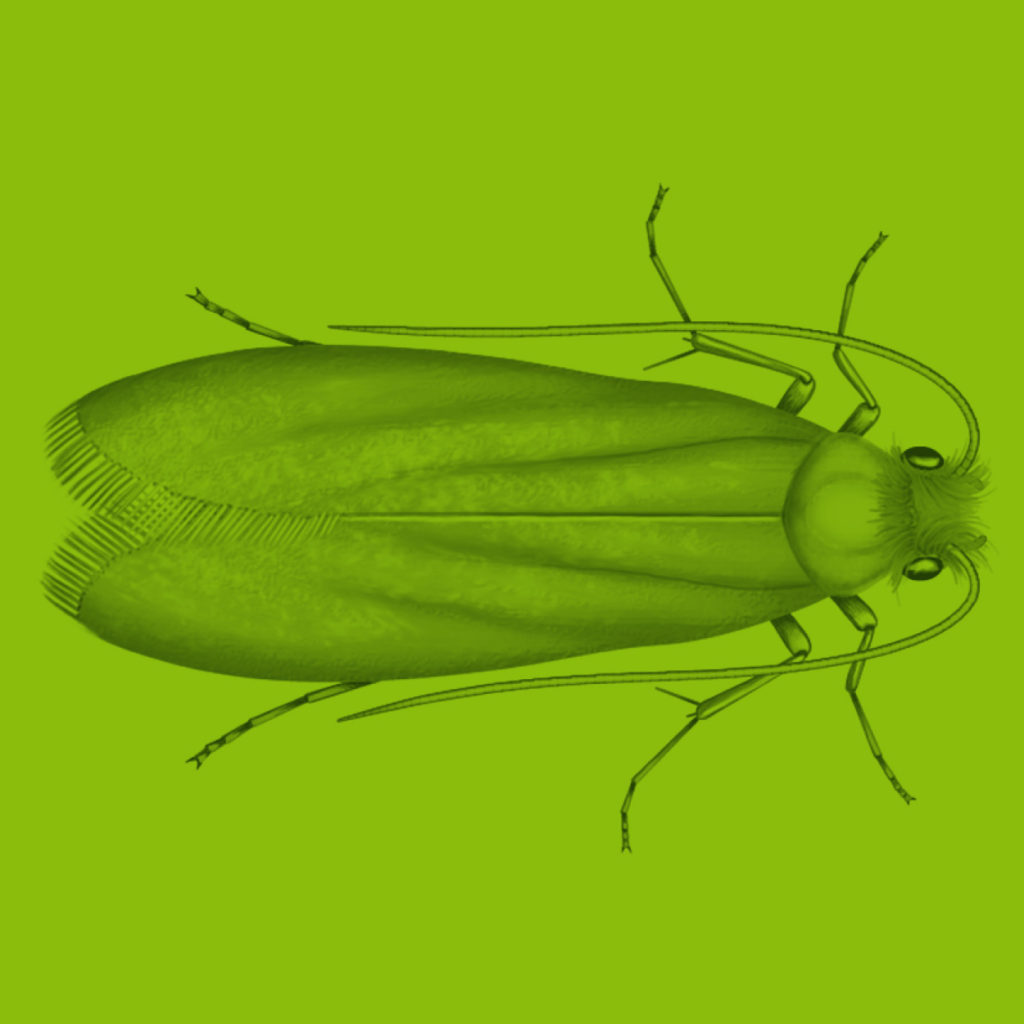Clothes moth
(Tineola Bisselliella)
The straw-yellow moth is 6 to 9 mm long and has roof-like folded wings over the back. The larvae are yellowish white, similarly large and live in a self-spun, open quiver on both sides.

Tips in case of infestation
- In case of infestation, wash textiles as hot as possible, place them in almost boiling water or freeze them
- Treat upholstered furniture and carpets with a steam cleaner
Prevention tips
- Textiles, furs, carpets and upholstered furniture check regularly for moths and their larvae at the time of purchase and later
- Only store textiles washed, as dry as possible and cool for a longer period of time. Vacuum floors and wardrobes regularly
- Dispose of vacuum cleaner bags reliably
- Insert moth-repellent products in wardrobes, e.g. essential oils (lavender, lemon), and replace them regularly
- Fly screens can prevent moths from entering
Diet
The adult moth does not absorb food and therefore does not cause any damage. Her larva eats keratin-containing materials such as wool, furs, feathers, hair and skin scales.
In this way, it causes holes or bare spots on textiles, carpets, upholstered furniture and insulation materials.
Life
In nature, the nocturnal and twilight-active animals occur in nests of birds and mammals.
Benefits
They are part of food webs and therefore an important food source for other insects, spiders and bats, for example.
By degrading kerat-containing substances, they also bring them back into the ecological cycle and thus contribute to soil fertility.